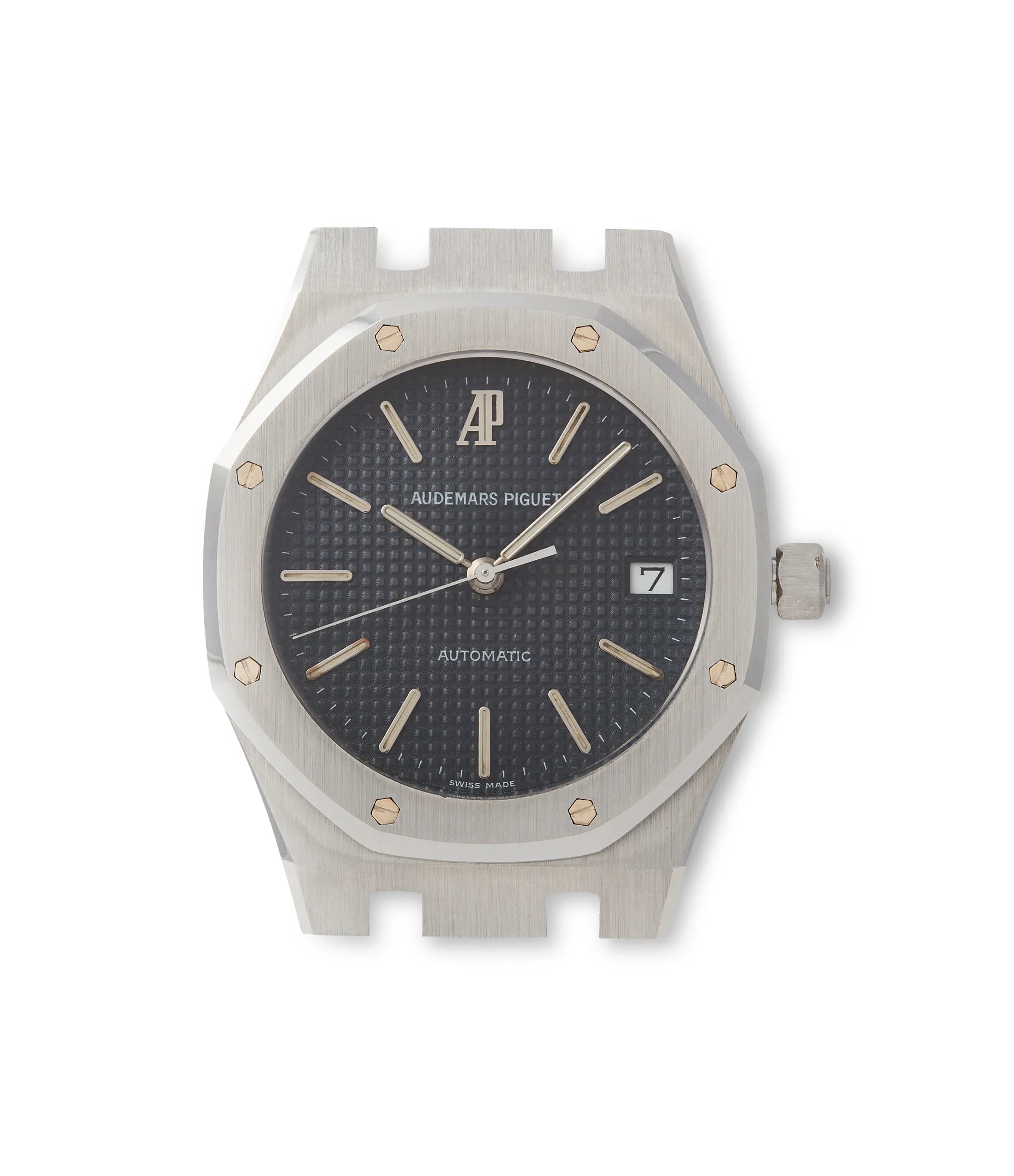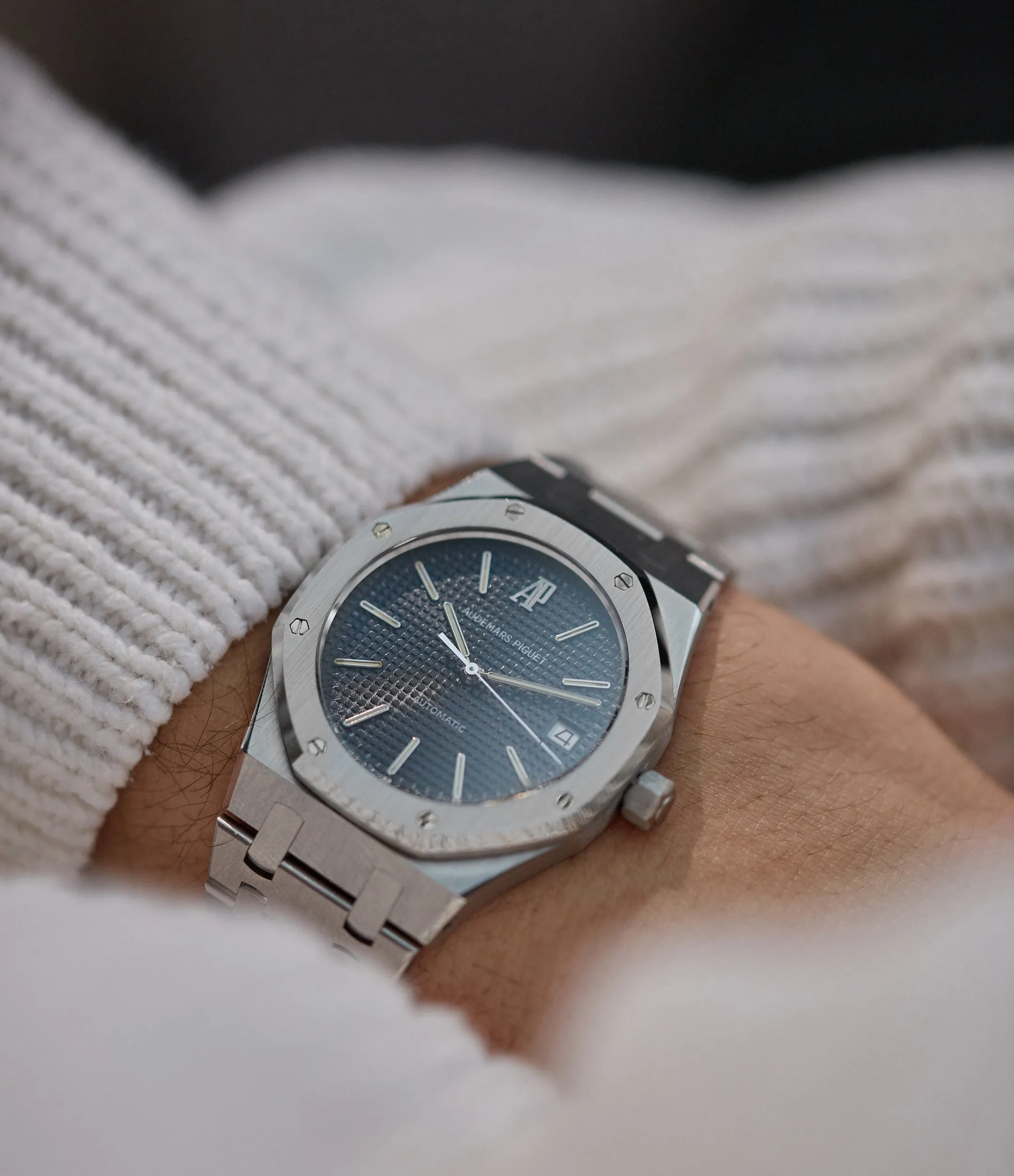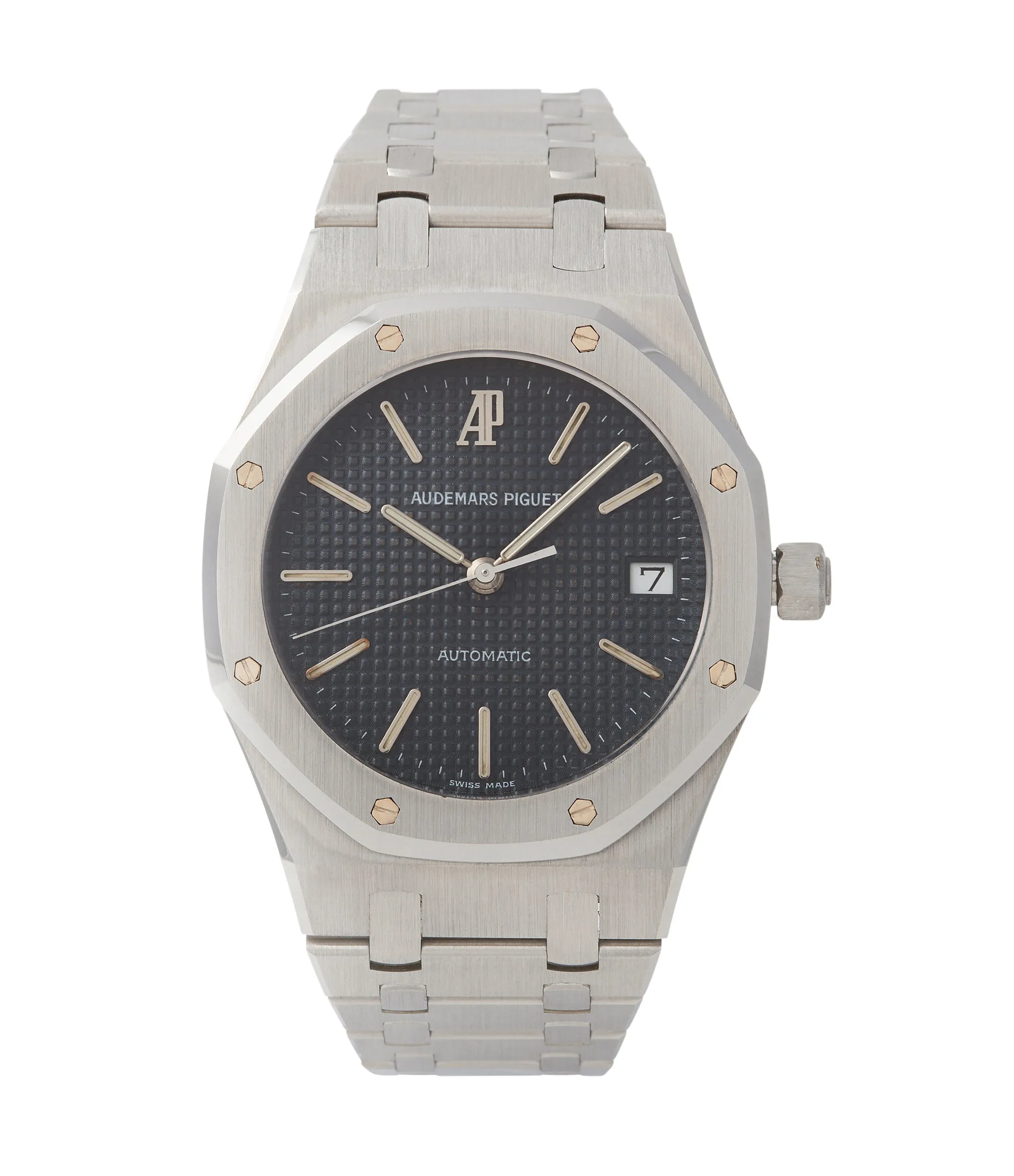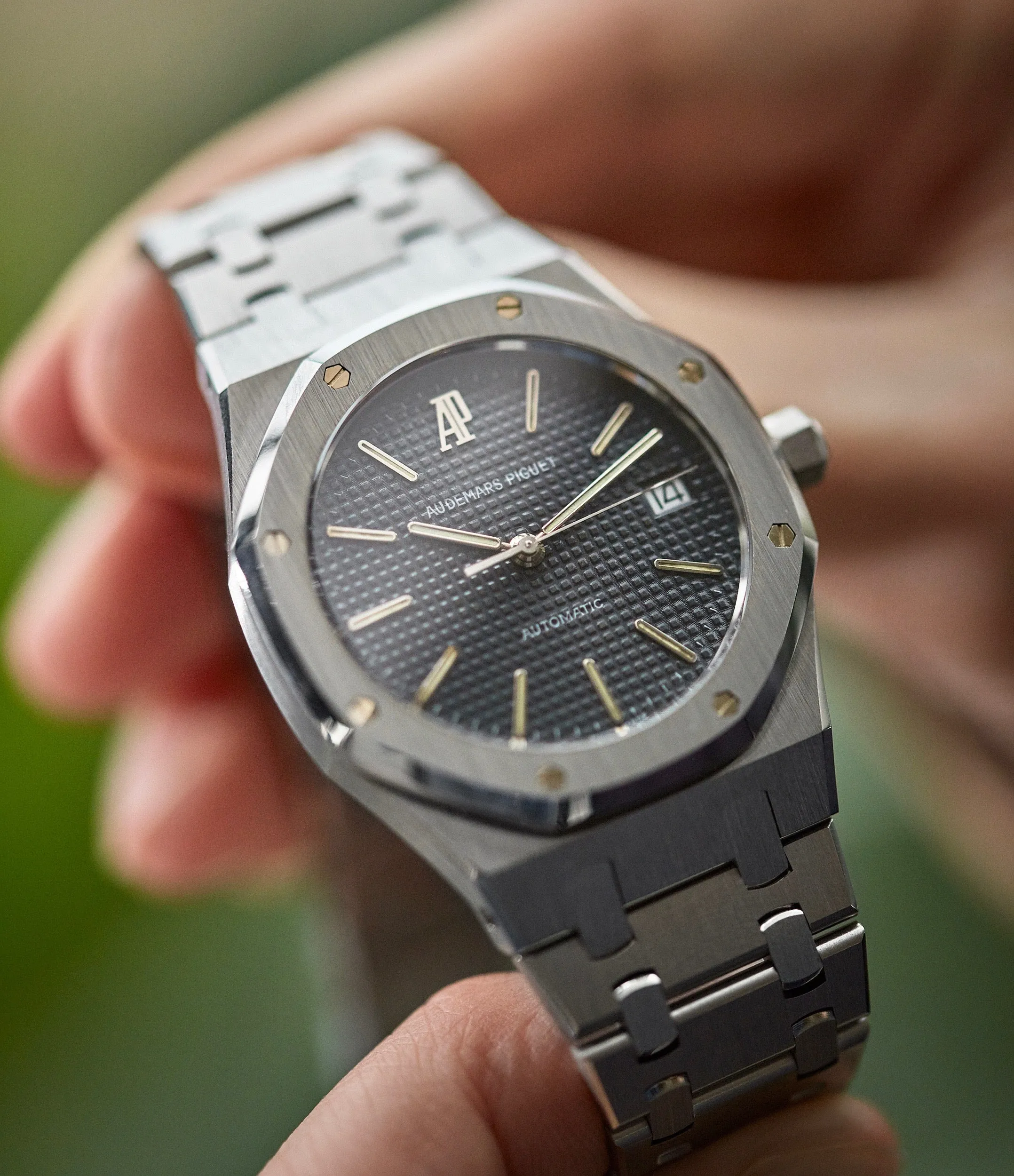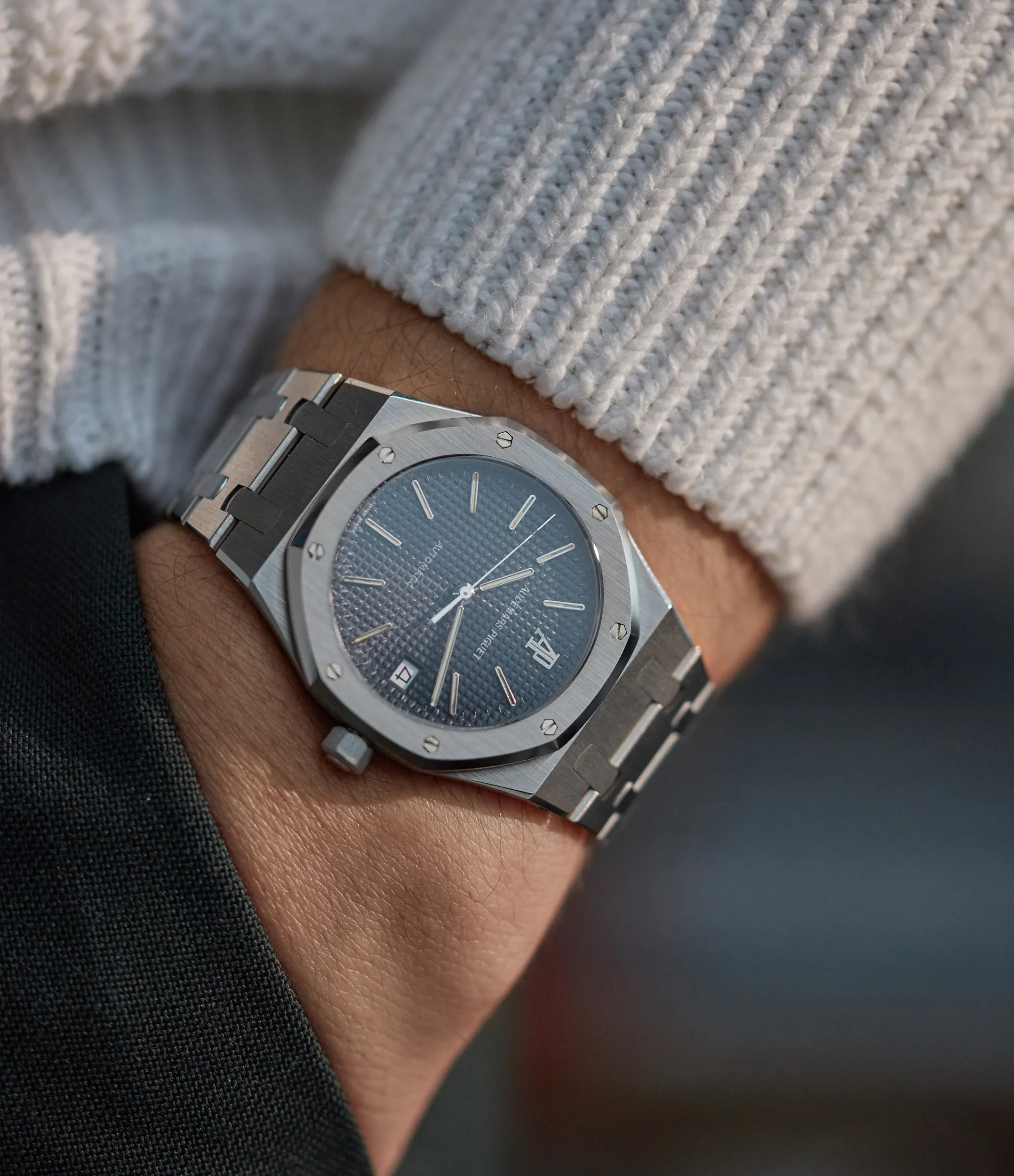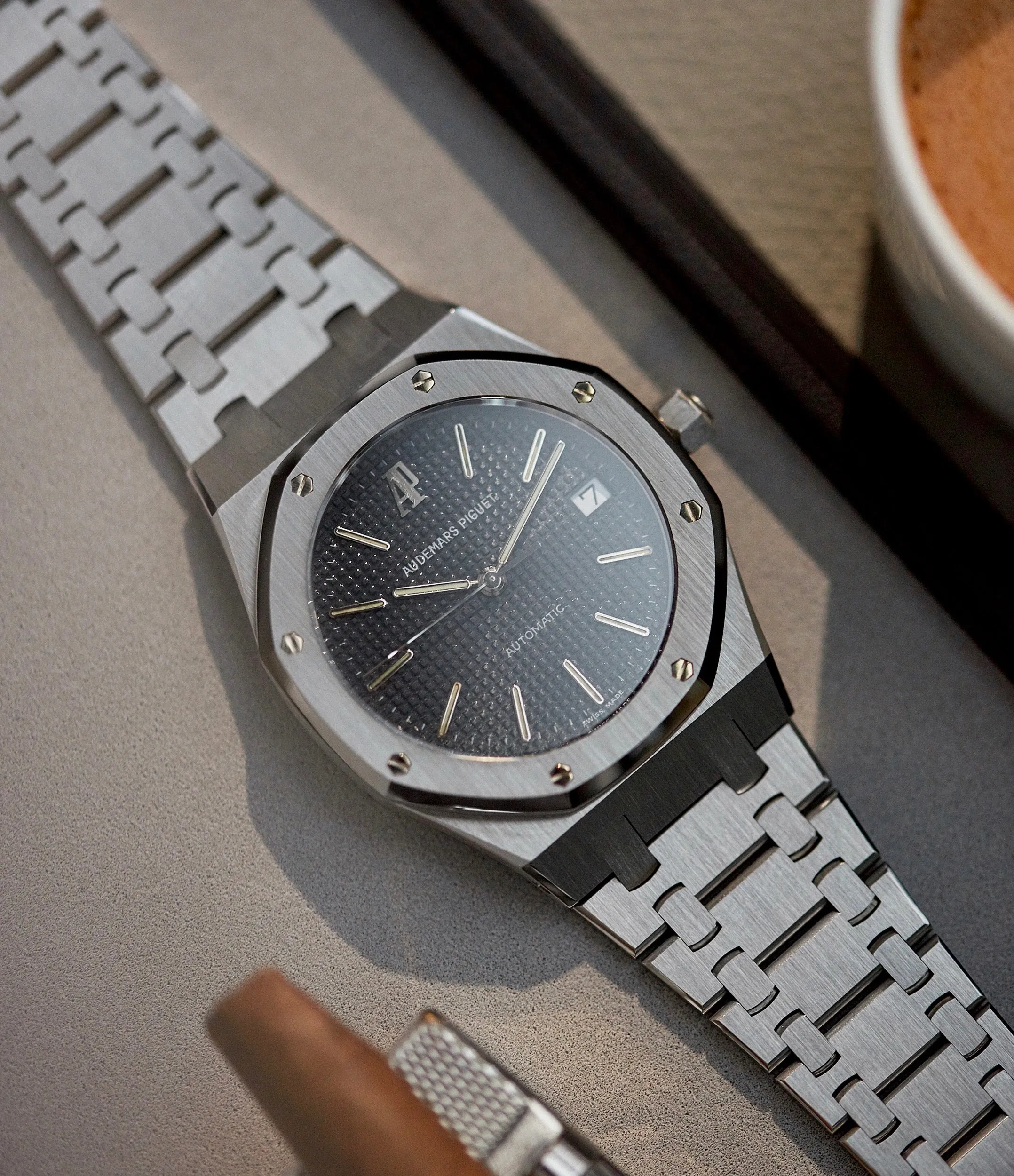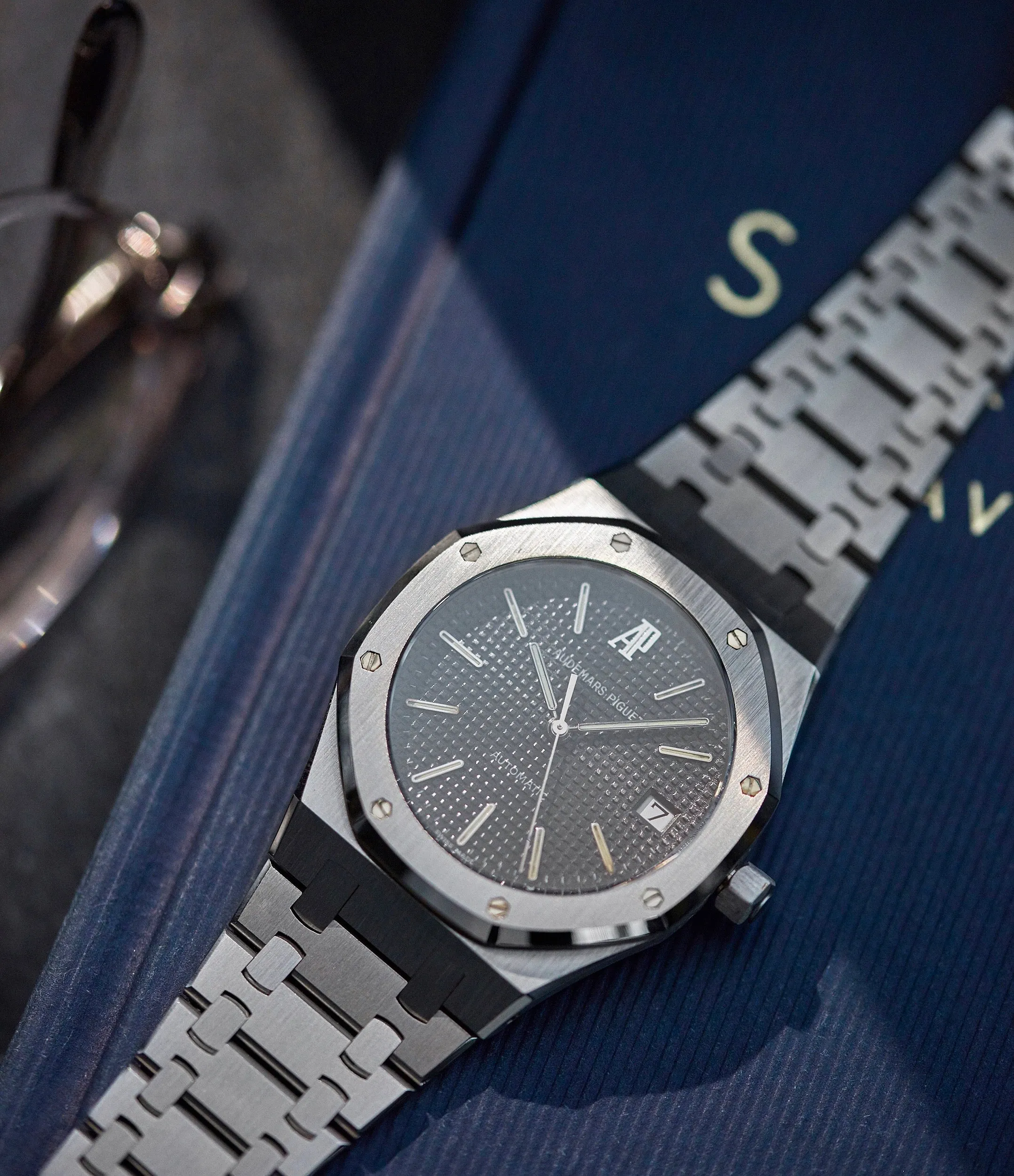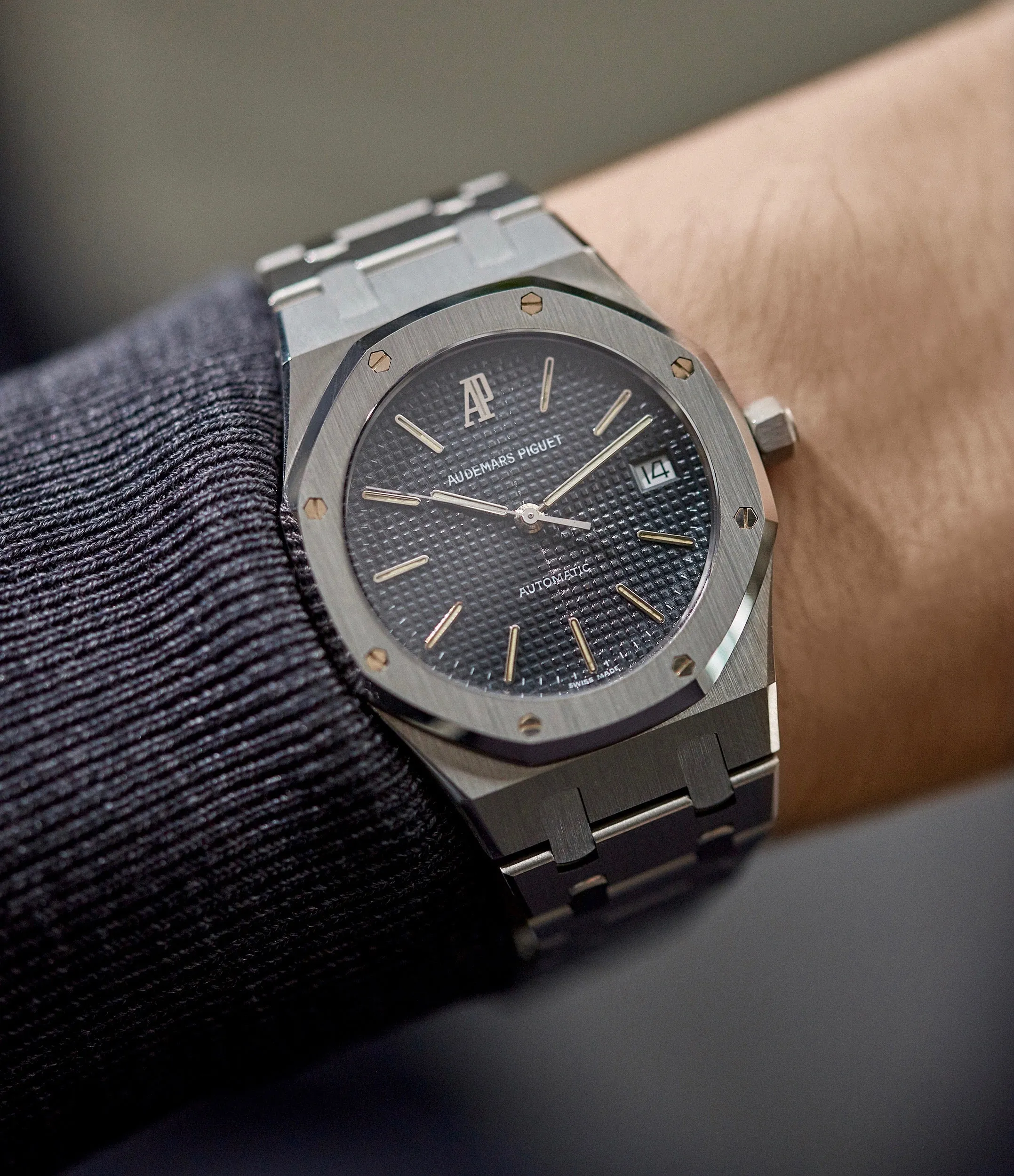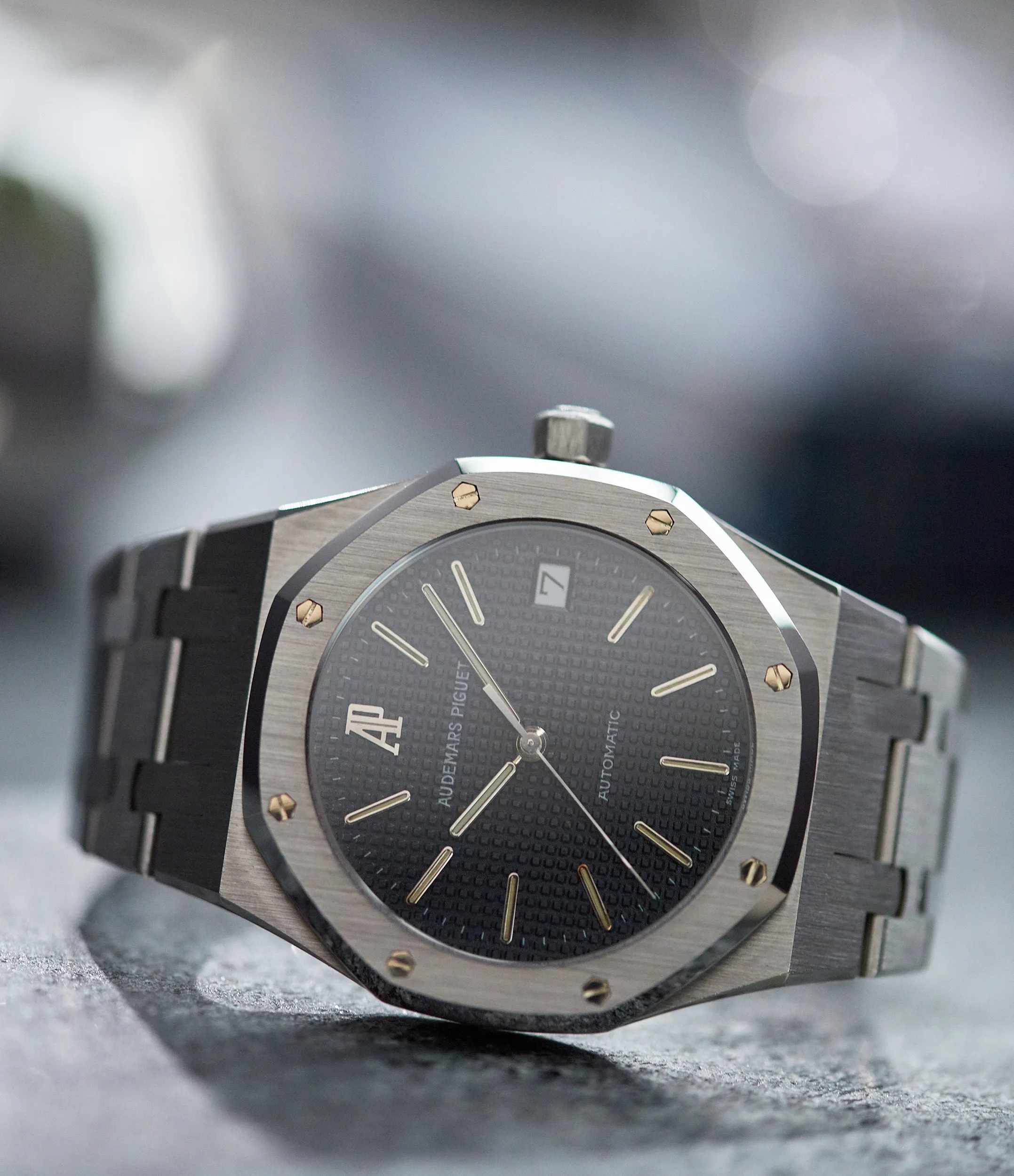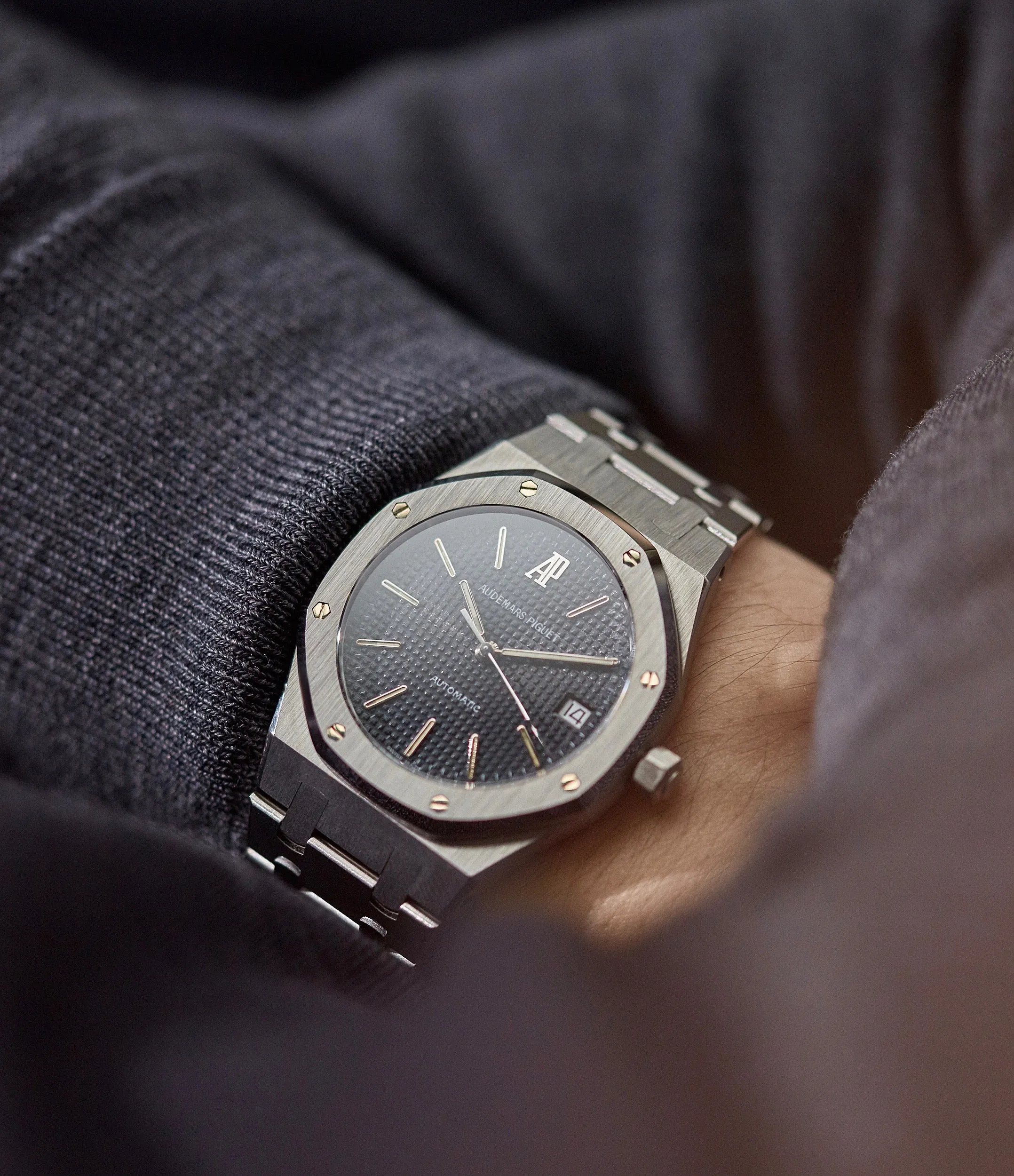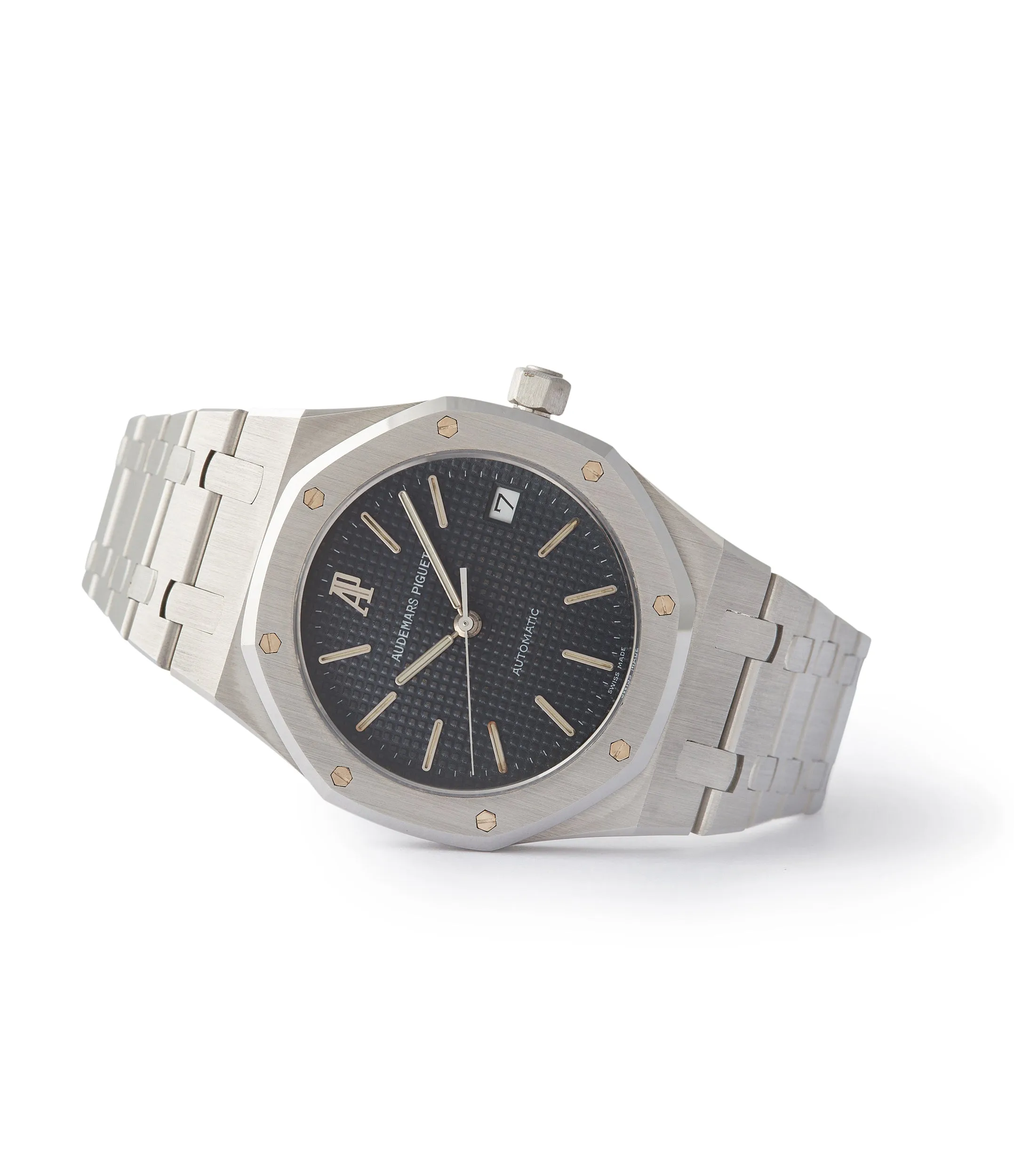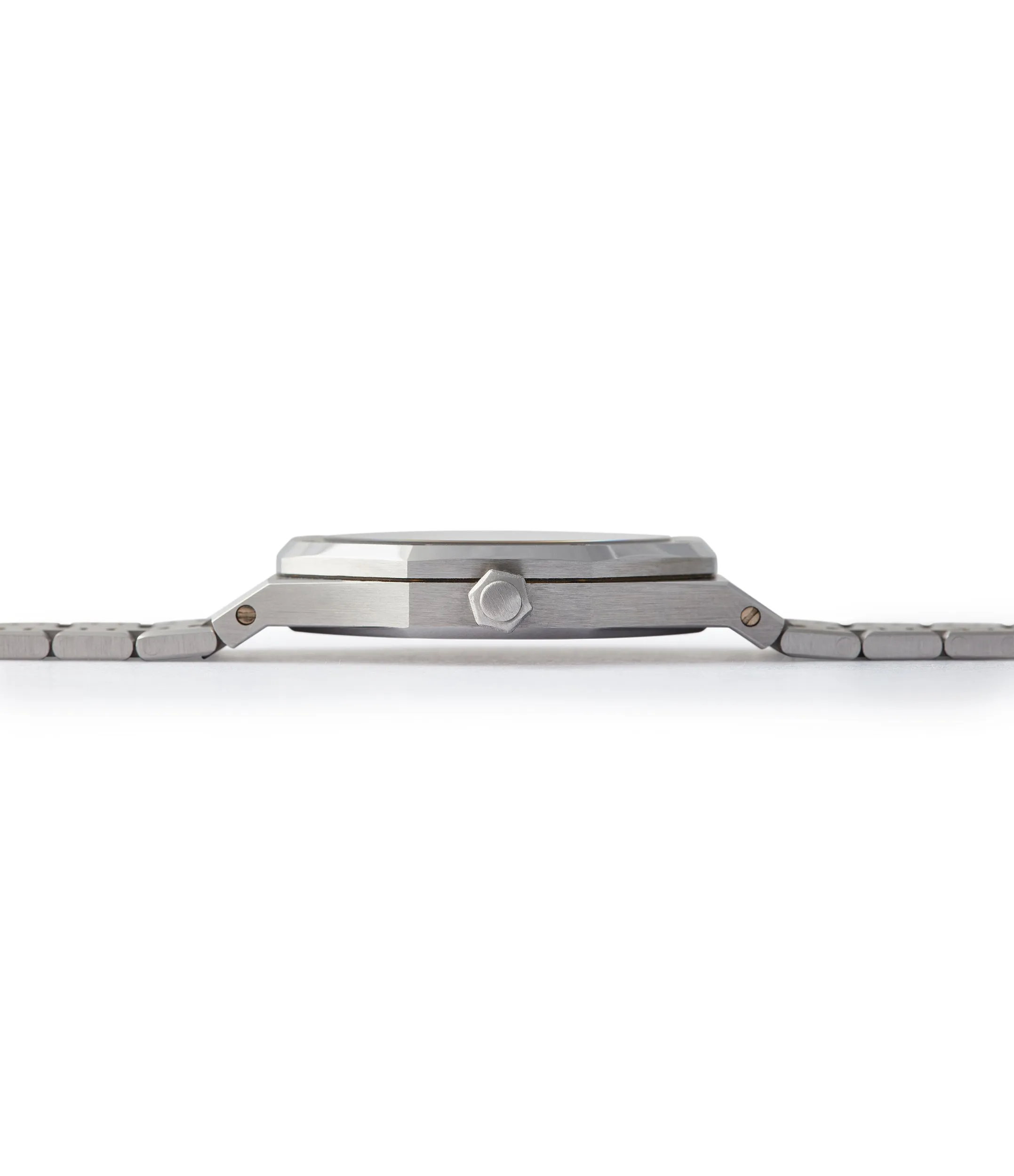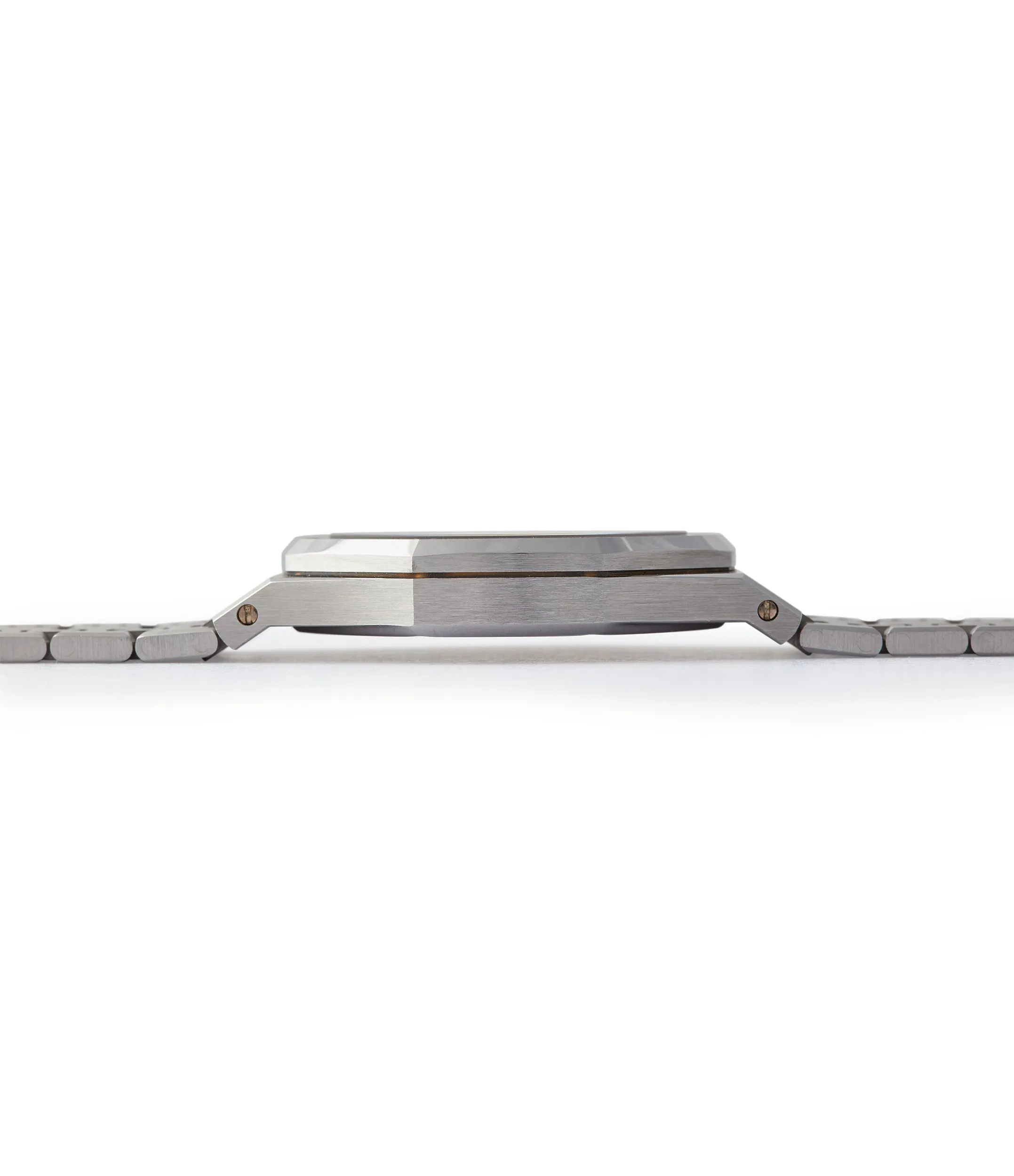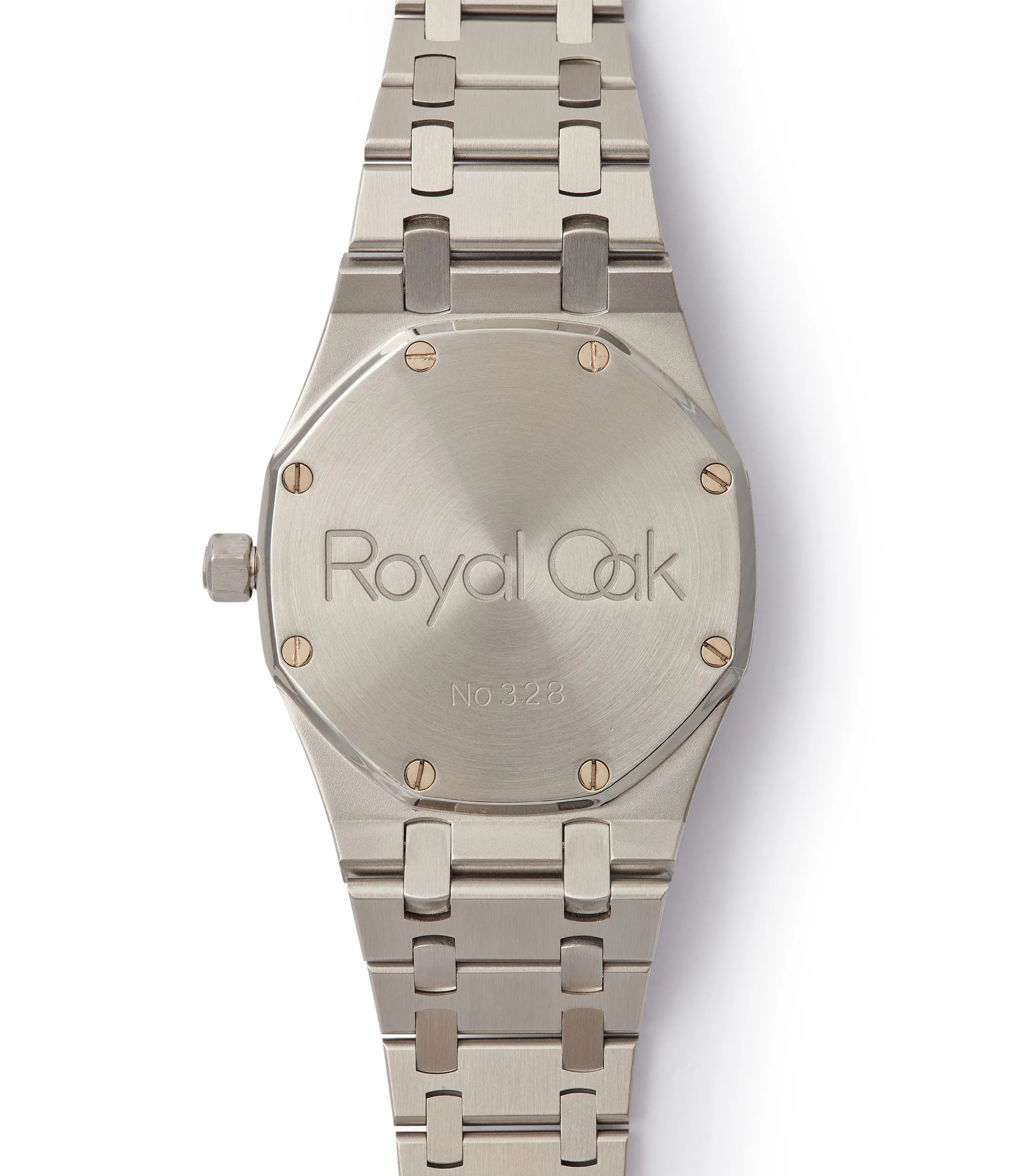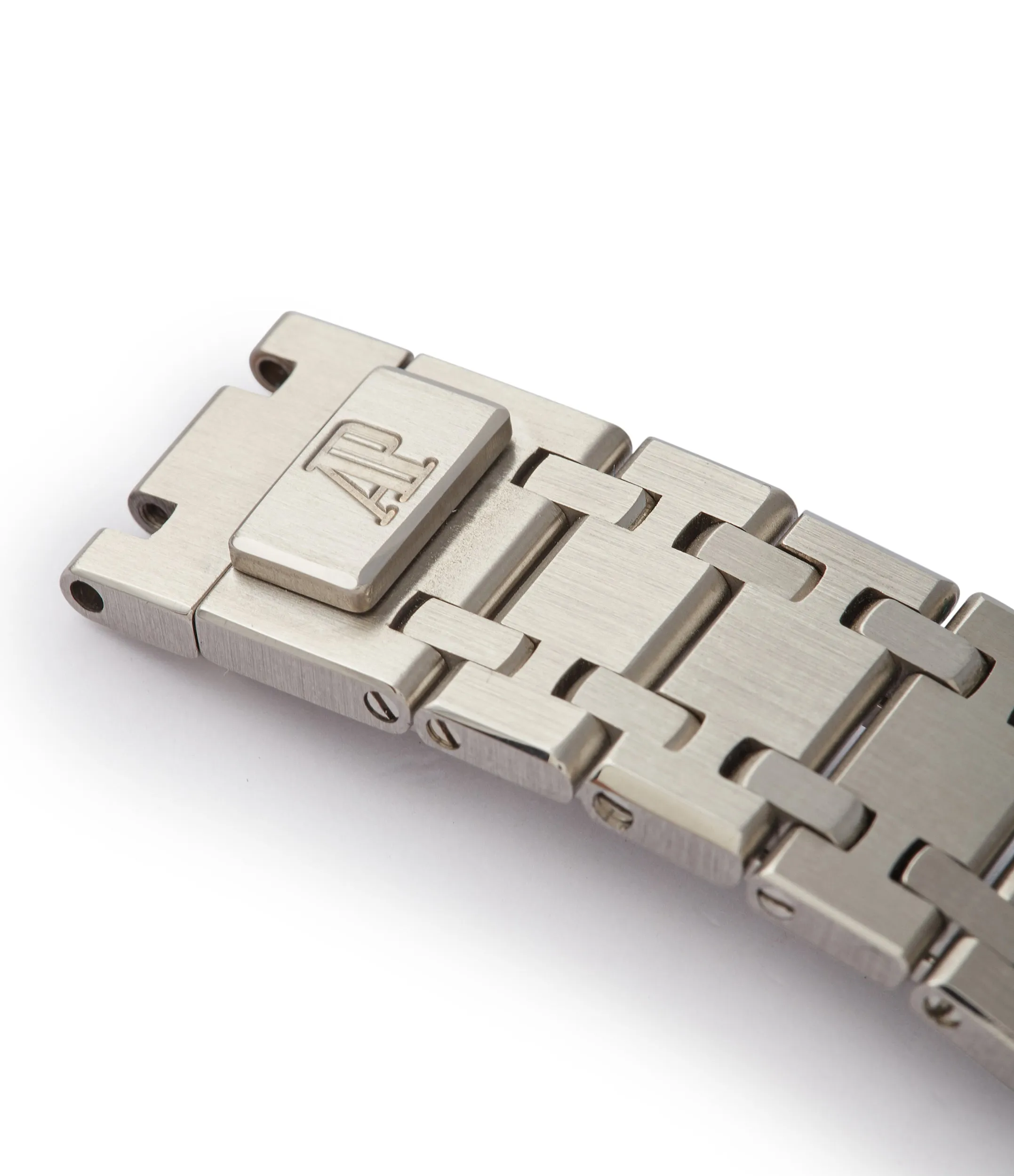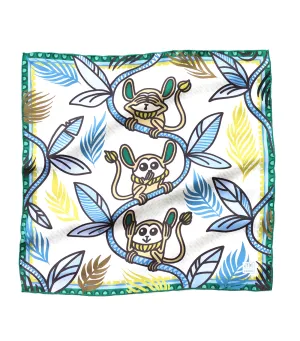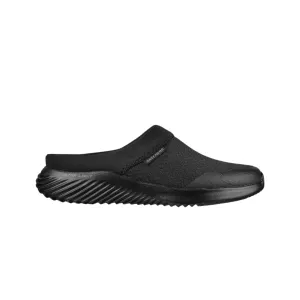It’s been 45 years since the creation of the original Audemars Piguet Royal Oak and this now classic piece, is more popular than ever. First unveiled by Audemars Piguet in the 1970s and designed by , who incidentally designed the Patek Philippe Nautilus amongst others, the has become a cultural icon due to its distinctive features and its role as a pioneer for high-end luxury sports watches.
The early 1970s was a time of great change within the watch industry, where the concept of a luxury watch in steel was a truly revolutionary idea. This example, the ref. 14700, was produced for a short period of time, in the early 1990s, as an alternative to the , with a reduced diameter of 36mm (over 39mm). As with all Audemars Piguet Royal Oak examples, the mid-size Royal Oak design features an integrated case and bracelet, with angular, bevelled and polished edges, famously penned by Gerald Genta.
In the same way Patek Philippe introduced a mid-size version of its emblematic Nautilus with the, Audemars Piguet did the same with the Royal Oak. The ref. 14700 is somewhat of an obscure reference, available for a short period of time, as a transitional model between the more widely produced references 4100 and 14790. With relatively few examples having surfaced, this specific watch is numbered '328' on the caseback, indicating its position in the sequence of production.
As with all Audemars Piguet Royal Oak examples, the reference 14700 features an integrated case and bracelet, with angular, bevelled and polished edges, famously penned by Gerald Genta. In many ways, the reference 14700 is a scaled-down version of the original reference 5402, retaining many of the same features, such as the “Petite Tapisserie” dial, and overall proportions. Interestingly, the dial on the ref. 14700 measures 1mm less than the dial on the original Royal Oak, the ref. 5402. As a result, the watch wears larger than its proportions would otherwise suggest, giving it an important visual presence on the wrist.
The polished screws, bezel and case edges fantastically contrast with the brushed surface of the case and bracelet. At 36mm in diameter, and only 7.8mm thick, this Royal Oak case is a beautiful twist of perspectives and size. It comes with its original bracelet and deployant clasp, featuring the hallmark of famed bracelet maker Gay Frères, who produced bracelets for the original Nautilus and Royal Oak. Thanks to the slim profile of the case and bracelet, the ref. 14700 hugs the wrist, in a way that is both supremely comfortable, yet distinctively elegant and characterful.
This ref. 14700 retains the more understated “Petite Tapisserie” pattern on the dial, forming the square and lozenge motif, as seen in earlier executions of the Royal Oak. Newer versions of the Royal Oak have since adopted AP’s bolder “Tapisserie Evolutive” dial pattern, less faithful to the original design. It also features the more traditional Audemars Piguet font, reminiscent of early Royal Oak watches.
The Royal Oak 14700ST is powered by the ultra-thin AP caliber 2225, derived from Jaeger-LeCoultre’s JLC 889 calibre movement. Formed of 280 components, the 40-jewel movement is rhodium-plated, with fausses côtes embellishment.
Viewings can be arranged in Central London by appointment only.
Closer look
| Brand: | Audemars Piguet |
| Model: | Royal Oak Ref. 14700ST |
| Movement: | mechanical automatic AP Caliber 2225 |
| Functions: | date, hours, minutes |
| Features: | “Petite Tapisserie” dial, quickset date |
| Case: | 36 mm stainless steel |
| Crystal: | sapphire |
| Bracelet: | stainless steel AP-stamped bracelet, Gay Frères signed clasp |
| Year: | 1990s |
| Box & papers: | - |

 Cart(
Cart(